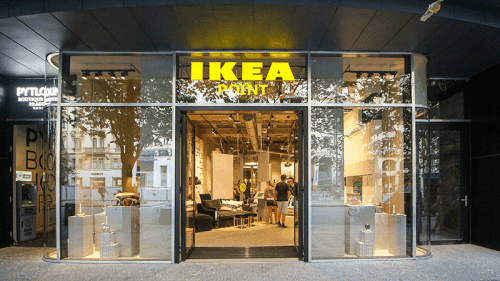Panelists at the ULI Fall Meeting session discussed what’s selling in master-planned communities and how to attract buyers with healthy and hip amenities that create a unique sense of character and place.
“Master-planned communities [MPCs] are bouncing back,” said moderator Gadi Kaufmann, managing director and chief executive officer of RCLCO real estate advisers. MPCs “represent a large share of new homes in the market and are getting a premium.” Kaufmann discussed national trends, based on an RCLCO national survey identifying the top-selling MPCs and in-depth interviews with developers of the top 20:
- Urban settings within MPCs have a significant advantage, but the amenities of choice are less about urban environment and more about “how the place lives.” Buyers want environments that are “denser, funner, synergistic, and provide more body heat.”
- Those MPCs that do better are segmented, with neighborhoods differentiated based on lifestyle, not only according to housing type, size, and architectural styles. Within larger communities, multiple villages are attractive, especially for buyers who wish to live in an age-qualified 55-plus village.
- Baby boomers want an active-adult-lifestyle MPC that is “engaged with nature, the environment, exercise, community, and education,” and near medical facilities. A village center with walkable streets is important, as are amenities such as a clubhouse with fitness and community facilities.
For MPC projects with a three-to-five-year buildout, there is no problem finding equity, said Kaufmann, but larger projects are more challenging. Large builders are developing bigger pieces of land, “but generally, we’ll continue to see fewer and smaller master-planned communities,” and maybe more joint land ventures. He said that budgets for amenities will be reduced—“people are perfecting the game of right size and right kind of amenities.” Furthermore, amenities will be built over time rather than all upfront to reduce the initial investments and to afford the occasion to celebrate openings of new facilities over time.
Buyers looking for a different kind of master-planned community are drawn to the farm-to-table lifestyle of Willowsford in Loudoun County, Virginia, which was selected as the National Association of Home Builders 2013 Community of the Year. Half of Willowsford’s 4,000 acres (1,600 ha) are conserved as open space for environmental preservation, recreation, and agricultural use. Planned around a 300-acre (121 ha) organic farm, Willowsford features four villages with 2,200 homes, two clubhouses with pools, a lake, an amphitheater, and 40 miles (64 km) of walking and biking trails. “We knew our buyers would be affluent and interested in local food,” said Laura Cole, vice president for marketing for Willowsford and its developer, Corbelis. “Through a focus group, we learned that our buyers were really interested in connecting with neighbors. They said, ‘We want a real place, not like the rest of northern Virginia.’”
The big draw to Willowsford besides the open space is the farm, overseen by a full-time manager, which produces 150 varieties of fruits, vegetables, and flowers. Corbelis built and operates the farm as a separate enterprise from the homeowners’ association, and it’s also supported by a per-household fee of $40 per year. Residents can pick their own produce or buy it from an on-site farm stand and farmers’ market. The community’s social life revolves around active living and healthy local food, including farm-centered education and potluck meals and culinary classes at the clubhouses.
Tom Martin, vice president for planning and products for FivePoint Communities, described the development firm’s Great Park Neighborhoods, a mixed-use master-planned community in Irvine, California, with 9,500 homes planned in eight neighborhoods, with three retail centers. FivePoint purchased the 1,000-acre (400 ha) brownfield in 2005 from the U.S. Navy, and rezoned and replanned it extensively during the Great Recession. Pavilion Park, SoCal Awards’ master-planned community of the year, is the first neighborhood to be built. Opened in December 2013, 630 of the 726 homes in Pavilion Park have been sold in less than a year, said Martin. Home prices range from the $700,000s to $1.5 million, and have already appreciated by about 15 percent, he said.
What distinguishes the Great Park Neighborhoods from its competition, explained Martin, is a master plan that promotes connectivity among residents, the authentic friendly ambience of neighborhoods’ past, and distinctive architecture that appeals to diverse buyers. Neighborhoods are linked by a central park and “pearl parks” as well as by networked trails for walking and biking. FivePoint Communities is boxing and moving 1,500 heritage trees to parks and other prominent places to lend a leafy, established feel. Homes are designed by architects and builders, and design is adjusted based on market demand. For example, 70 percent of Pavilion Park’s buyers have come from East Asia and China, and their cultural preferences to have in-laws living within the home rather than in planned lock-off suites prompted a design shift to feature a second master bedroom on the main floor.
Republic Property Group and its copresident, Tony J. Ruggeri, are banking on the millennials’ buying homes at Light Farms, a 1,070-acre (433 ha) master-planned community in Celina, Texas, located about 40 miles (64 km) north of Dallas. Light Farms is planned for 18 neighborhoods and 3,000-plus homes, a fitness center, four pools, a tennis court complex, 132 acres (53 ha) of open space, and 19 miles (30 km) of hike and bike trails. Some 267 homes, ranging in price from the $240,000s to the $600,000s, have been built in the first phase.
“Millennials want art and culture from the city, as opposed to suburban sterility,” he said. As a millennial himself, Ruggeri said, “We’re looking for transparency, purpose, and authenticity.” To underscore authenticity on the former Light family farm, the developers placed tractors as art and artifacts in the landscape. Millennials also “have an unhealthy attachment to technology, and use it for everything,” he noted. Ruggeri advised fiber installation in homes with a minimum of 300 megabits and in-ground infrastructure. “Hire a millennial to do your tech, and develop an app for the community” that provides information to questions such as, How busy is the gym now? Where am I on the bike trail right now? “User interaction has to be really good and in real time,” he said. “People connect to each other and information by apps and Facebook.”
Asked about the investment and sustainability of community amenities, Cole explained that building the farm and two clubhouses upfront has been a tremendous draw, and that the Willowsford Conservancy—now transitioning to a 501-C3 nonprofit able to accept tax-exempt contributions—will support the open space, farm, and trails in the future. Martin noted that Great Park Neighborhoods’ residents are taxed to build the central park and its amenities, including a swimming pool, sports courts, and a spa. Ruggeri said savings gleaned from drought-tolerant grasses and other landscape strategies are helping support amenity development.
The success of MPCs ultimately depends on building relationships with customers, said Kaufmann, “when they feel you’ve delivered the product and lifestyle they were hoping for.”
Kathleen McCormick of Fountainhead Communications LLC in Boulder Colorado, writes about design, the environment, and healthy communities.




